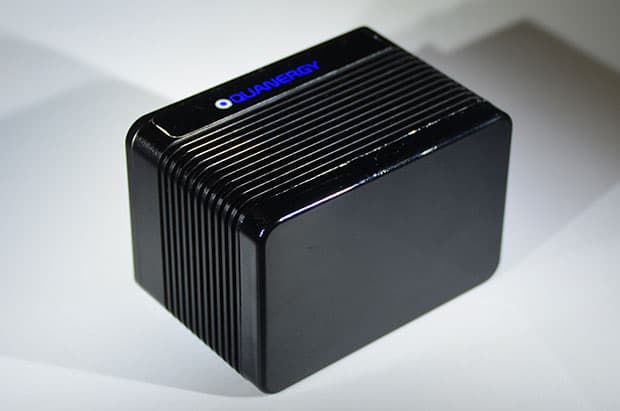Quanergy Lidar Makes Self-Driven Cars Possible For Everyone
Quanergy, the 3D sensor maker from California, have announced their latest Lidar for self-driven cars. Best part is, the "S3" would cost as less as $250. These 3D mapping sensors are one of the most significant components of driverless cars, and their prices can greatly affect the cost of building the car. It will primarily be provided to OEM’s, and the large volume will help in bringing the cost down to $250 or less, Quanergy says. Previously, sensors like this cost around $75000 a piece.

Lidar is similar to Radar, but it maps the surroundings using laser pulses instead of ultrasonic pulses. Based on the reflection it receives from objects around, it maps the surroundings. By calculating the time between emission of the laser pulse and the reflection, the sensor will know the distance of that object. In addition to that, the direction plays a vital role too. That’s some complex math alright.
To capture the entire environment, the sensor will have to send out laser pulses in all directions. Despite that, the S3 has no moving parts. Quanergy has achieved this by Optical phased array of Photonic IC’s. When a laser pulse is directed through this array, it is spread, enabling countless steering angles. The pulses are spaced microseconds apart, so imagine a reflecting structure, morphing into a different shape so that it reflects in a new direction. Every microsecond.

This polymorphic trait comes in handy when more pulses need to be focussed in one direction, but the other directions too need to be focussed on simultaneously. For instance, when a car is approaching an intersection, the sensors might need more data from the sides, but still need some data of obstacles straight ahead too. On top of all that, it is capable of deciding where it should focus next, based on current data. This need not be singular to cars. This sensor can be employed in Robotics, Aerospace and a lot more.
The S3 will be available early next year, as the company is still working on the preproduction. But 3D mapping has seen plenty of updates already this year. Intel used it in an <a href="https://www.crazyengineers.com/threads/intel-daqri-smart-helmet-gives-you-x-ray-vision-lets-you-see-through-walls.86231">Intel-DAQRI Smart Helmet Gives You X-Ray Vision, Lets You See Through Walls</a>. Lenovo and Google put <a href="https://www.crazyengineers.com/threads/lenovo-and-google-to-push-augmented-reality-further-announce-first-project-tango-smartphone.86245">Lenovo And Google To Push Augmented Reality Further: Announce First Project Tango Smartphone</a>. Looks like 3D mapping is the order of the year. And, it’s all just getting started.
Source: #-Link-Snipped-#

Lidar is similar to Radar, but it maps the surroundings using laser pulses instead of ultrasonic pulses. Based on the reflection it receives from objects around, it maps the surroundings. By calculating the time between emission of the laser pulse and the reflection, the sensor will know the distance of that object. In addition to that, the direction plays a vital role too. That’s some complex math alright.
To capture the entire environment, the sensor will have to send out laser pulses in all directions. Despite that, the S3 has no moving parts. Quanergy has achieved this by Optical phased array of Photonic IC’s. When a laser pulse is directed through this array, it is spread, enabling countless steering angles. The pulses are spaced microseconds apart, so imagine a reflecting structure, morphing into a different shape so that it reflects in a new direction. Every microsecond.

This polymorphic trait comes in handy when more pulses need to be focussed in one direction, but the other directions too need to be focussed on simultaneously. For instance, when a car is approaching an intersection, the sensors might need more data from the sides, but still need some data of obstacles straight ahead too. On top of all that, it is capable of deciding where it should focus next, based on current data. This need not be singular to cars. This sensor can be employed in Robotics, Aerospace and a lot more.
The S3 will be available early next year, as the company is still working on the preproduction. But 3D mapping has seen plenty of updates already this year. Intel used it in an <a href="https://www.crazyengineers.com/threads/intel-daqri-smart-helmet-gives-you-x-ray-vision-lets-you-see-through-walls.86231">Intel-DAQRI Smart Helmet Gives You X-Ray Vision, Lets You See Through Walls</a>. Lenovo and Google put <a href="https://www.crazyengineers.com/threads/lenovo-and-google-to-push-augmented-reality-further-announce-first-project-tango-smartphone.86245">Lenovo And Google To Push Augmented Reality Further: Announce First Project Tango Smartphone</a>. Looks like 3D mapping is the order of the year. And, it’s all just getting started.
Source: #-Link-Snipped-#
0
